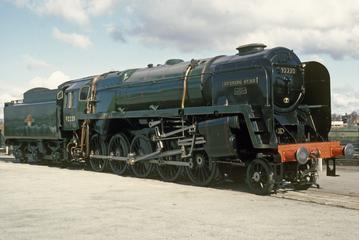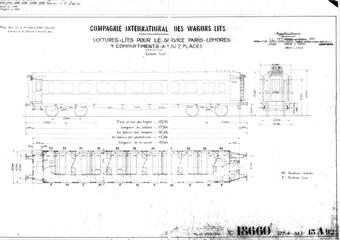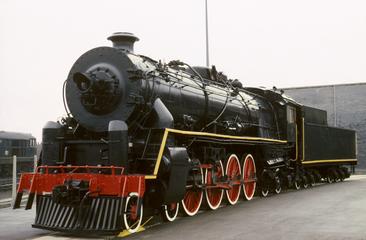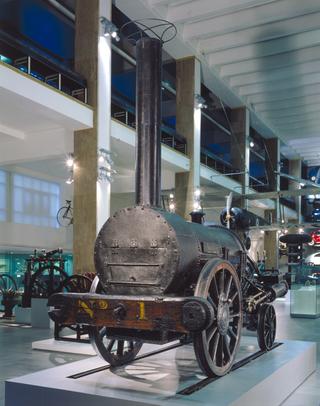
Steam locomotive, 'Beattie Well Tank'
Steam locomotive, London & South Western Railway, 2-4-0WT No 298, 'Beattie Well Tank', designed by W.G. Beattie, built in 1874, withdrawn in 1962. Renumbered 30587 by British Railways.
Tank engines are steam locomotives which carry their water in water tanks, rather than a tender. There are different types of tank engine, and this locomotive is a well tank, which means that the water is stored in a ‘well’ between the frames on the underside of the locomotive.
The standard well tanks were designed by Joseph Hamilton Beattie, the chief mechanical engineer of the London & South Western Railway, and introduced in 1862 to work suburban passenger trains. After Joseph’s death in 1871 his son William George Beattie succeeded him as locomotive engineer and No 298 is one of William’s designs. The 85 locomotives of the class were primarily built in Manchester by Beyer, Peacock and Co, although some were built at the LSWR’s workshop at Nine Elms.
By the 1890s, newer locomotives were available, and the class was dispersed to depots away from the London area. In 1895 No 298 was one of three class members transferred to Cornwall to work on one of the oldest railways in Britain, the Bodmin & Wadebridge Railway, opened in 1834. Their short wheelbase was well suited to hauling China clay and goods trains on the tightly curved Wenford Bridge branch as more modern locomotives were too long and heavy. This would ensure their long-term survival when the remainder of the class was scrapped. It became No 0298 on the LSWR’s ‘duplicate list’ in 1898.
The locomotive has gone through many changes over the years. It was originally built without a cab, and it also had the characteristic straight-sided ‘stove-pipe’ chimney of Beyer, Peacock & Co. In 1901, 1921 and 1933, the locomotive was overhauled or substantially rebuilt. The 1921 rebuild at Eastleigh Works included fitting items such as a Drummond-pattern lipped chimney and new boiler. It entered Southern Railway ownership in 1923 and gained the number 3298 a decade later.
Entering British Railways ownership in 1948, it was renumbered 30587. Its duties remained much as before until ex-Great Western Railway 1366 class pannier tanks were successfully trialled on the line. The Beattie Well Tanks were therefore replaced in 1962; by this time No 30587 was 88 years old and had spent 67 years in Cornwall. Upon withdrawal the three locomotives represented the oldest design still in use on the national network. Two are preserved.
Details
- Category:
- Locomotives and Rolling Stock
- Object Number:
- 1978-7018
- Materials:
- acetone
- type:
- steam locomotive
- credit:
- British Rail, Clapham




